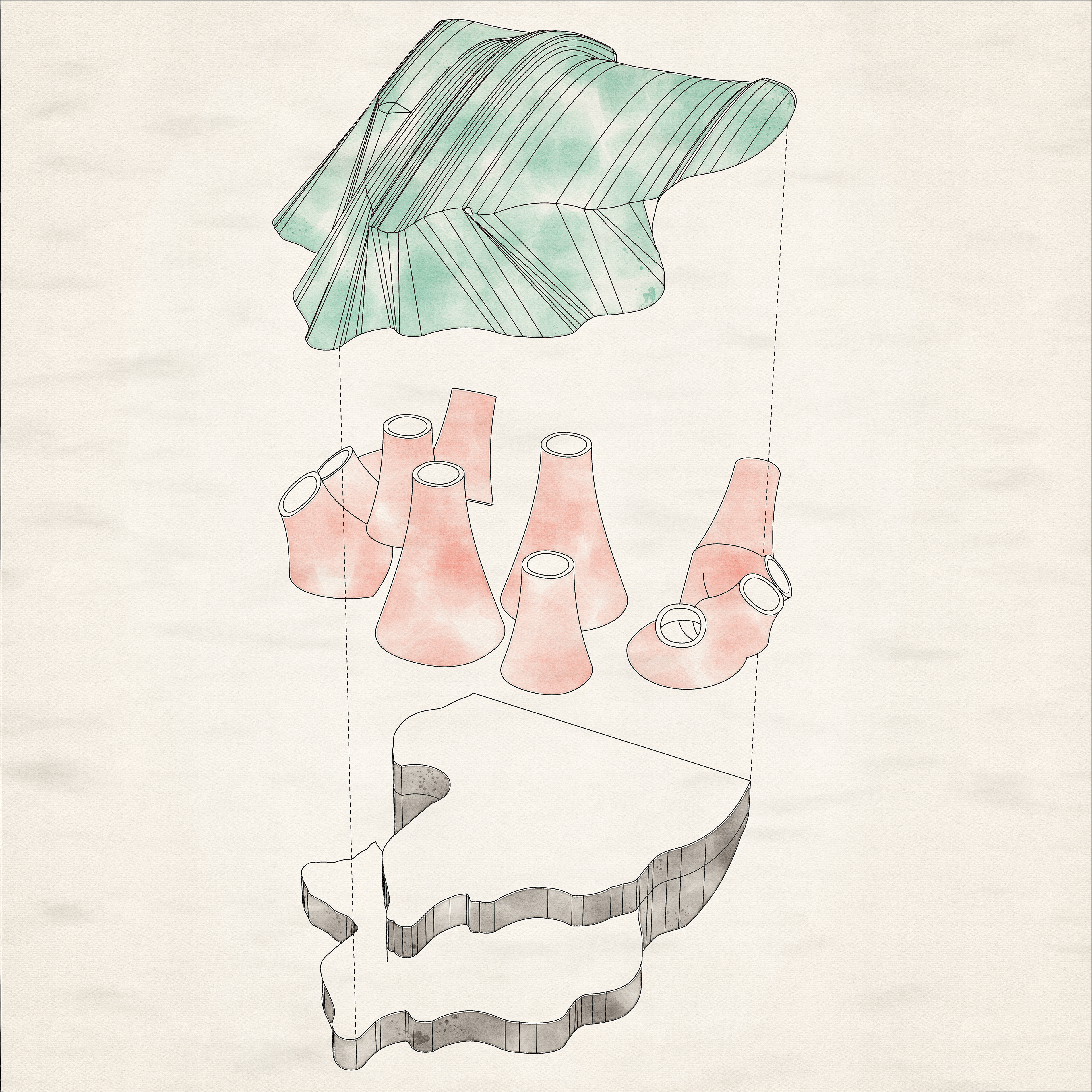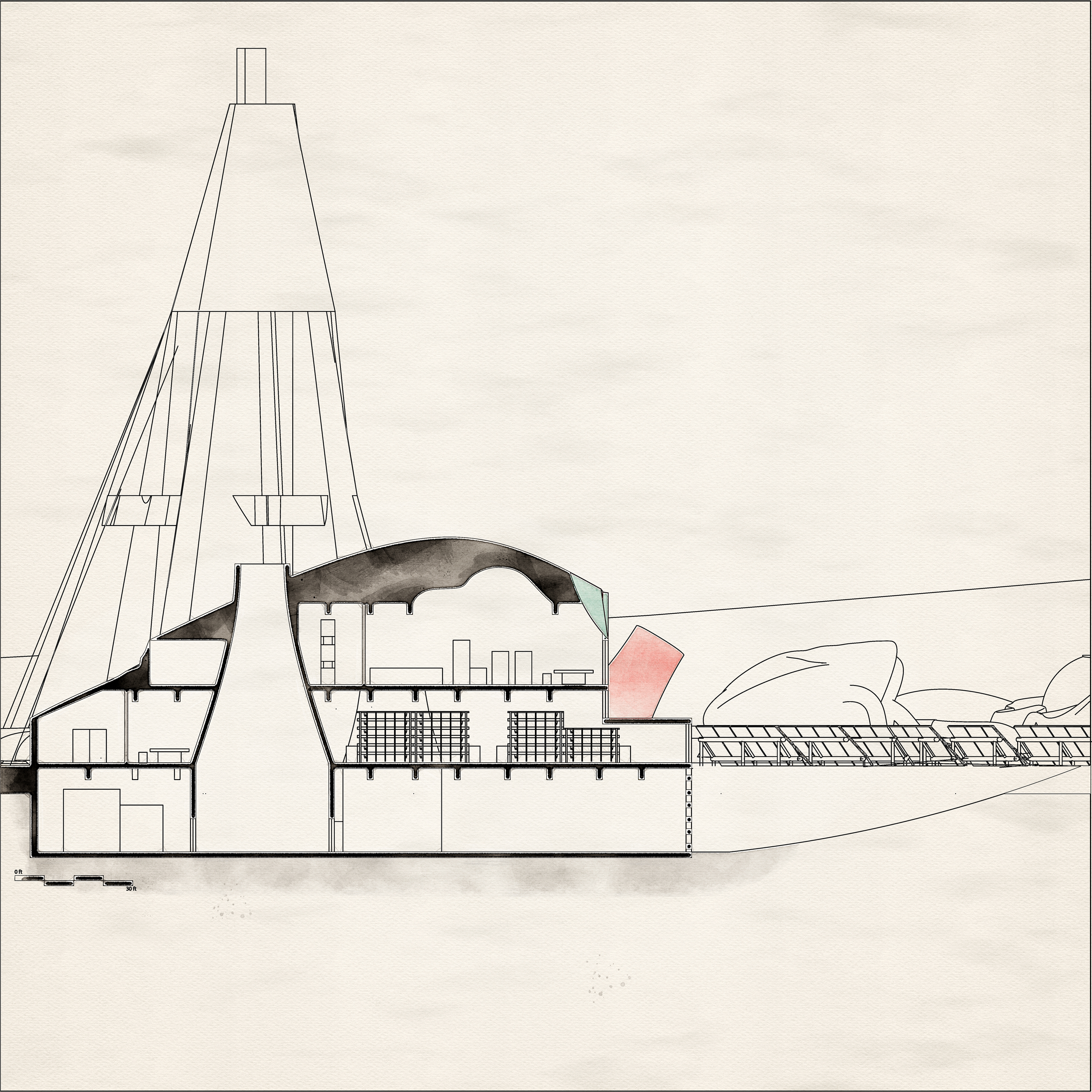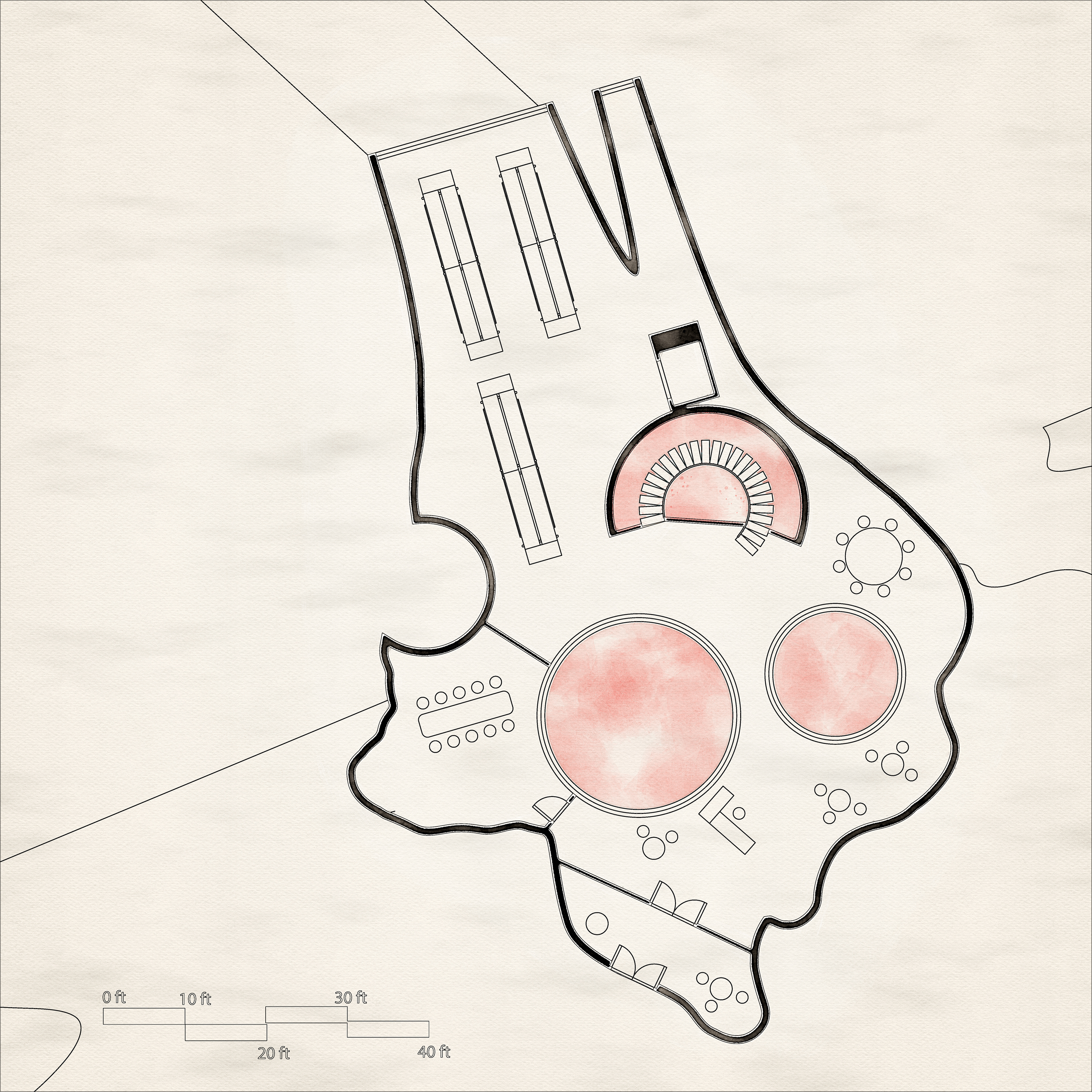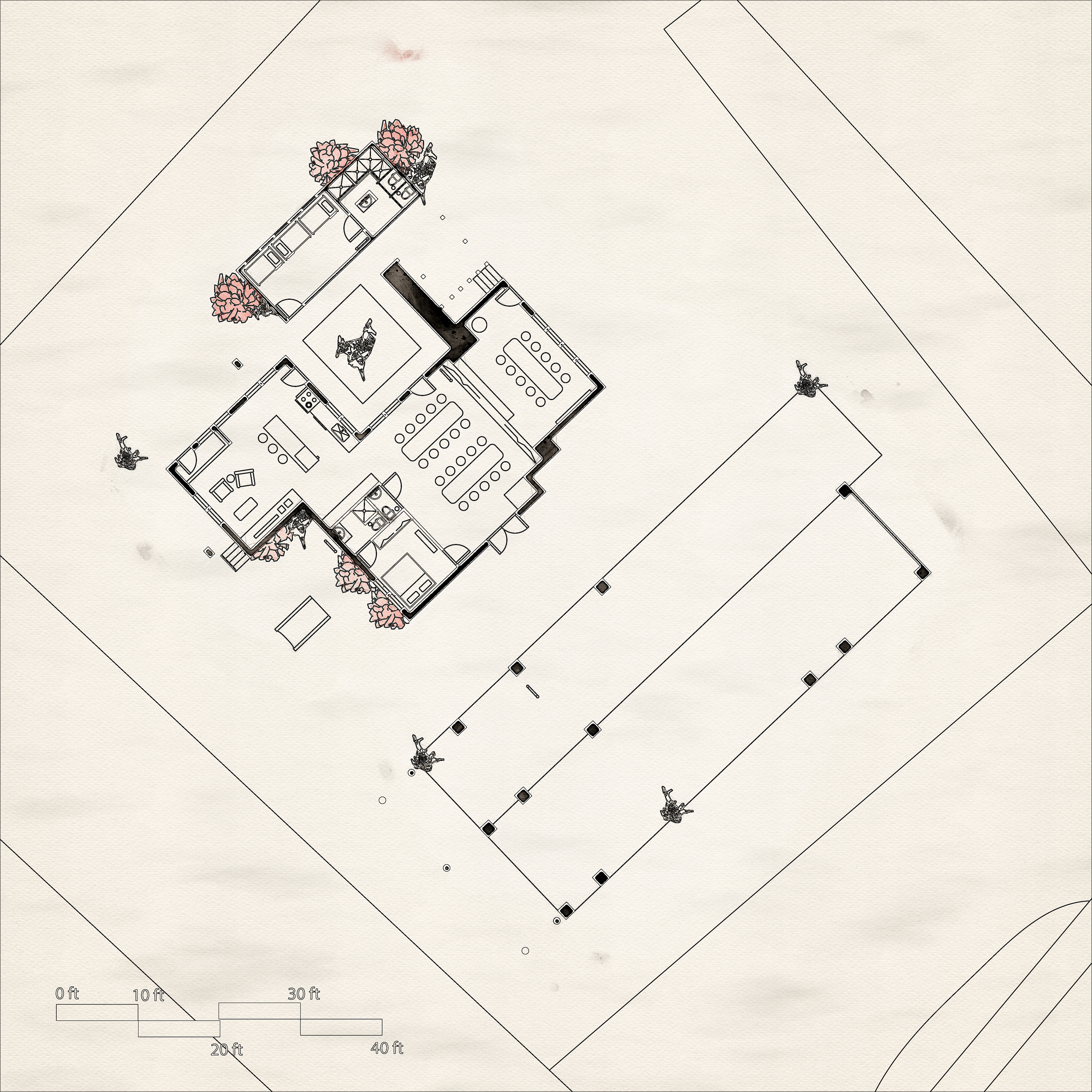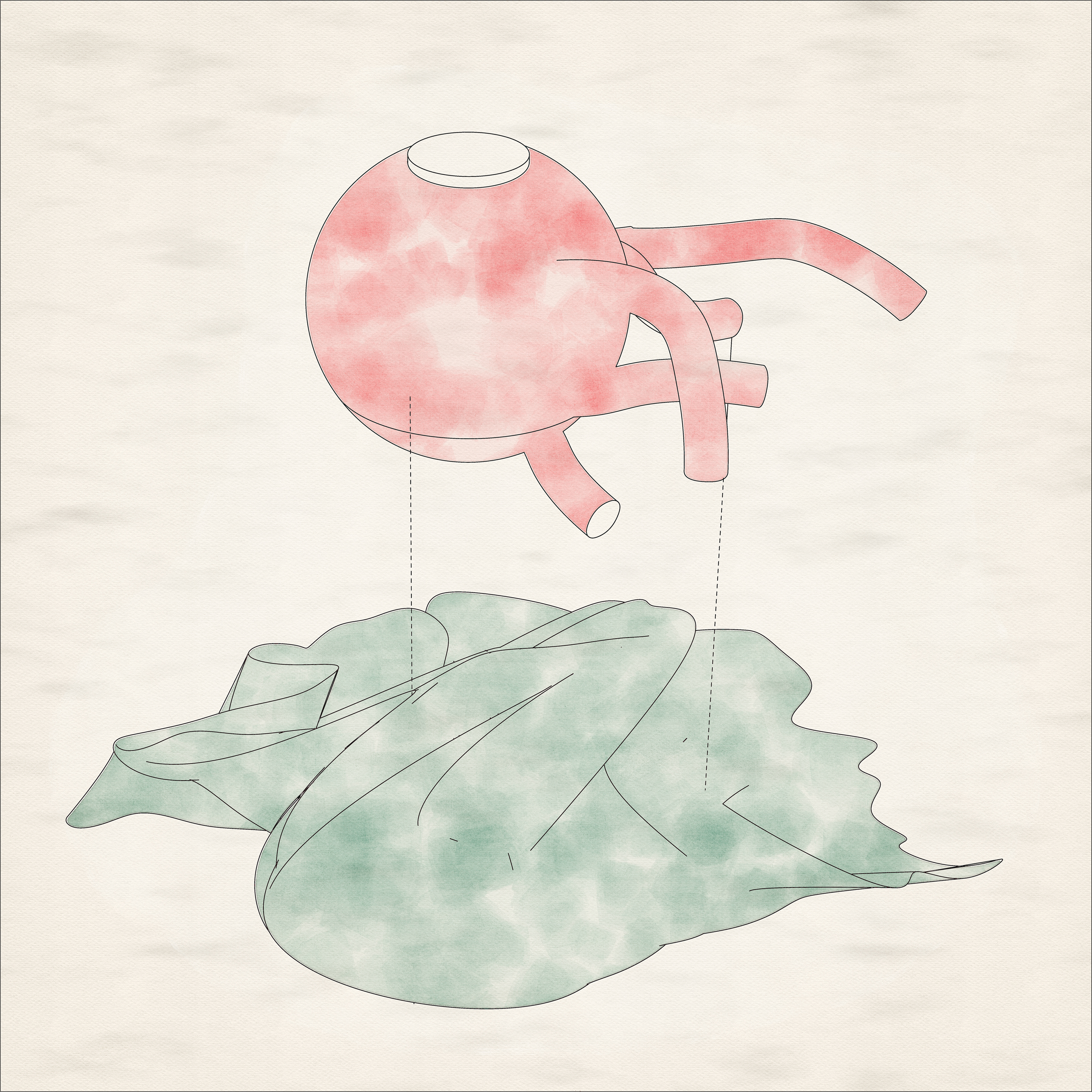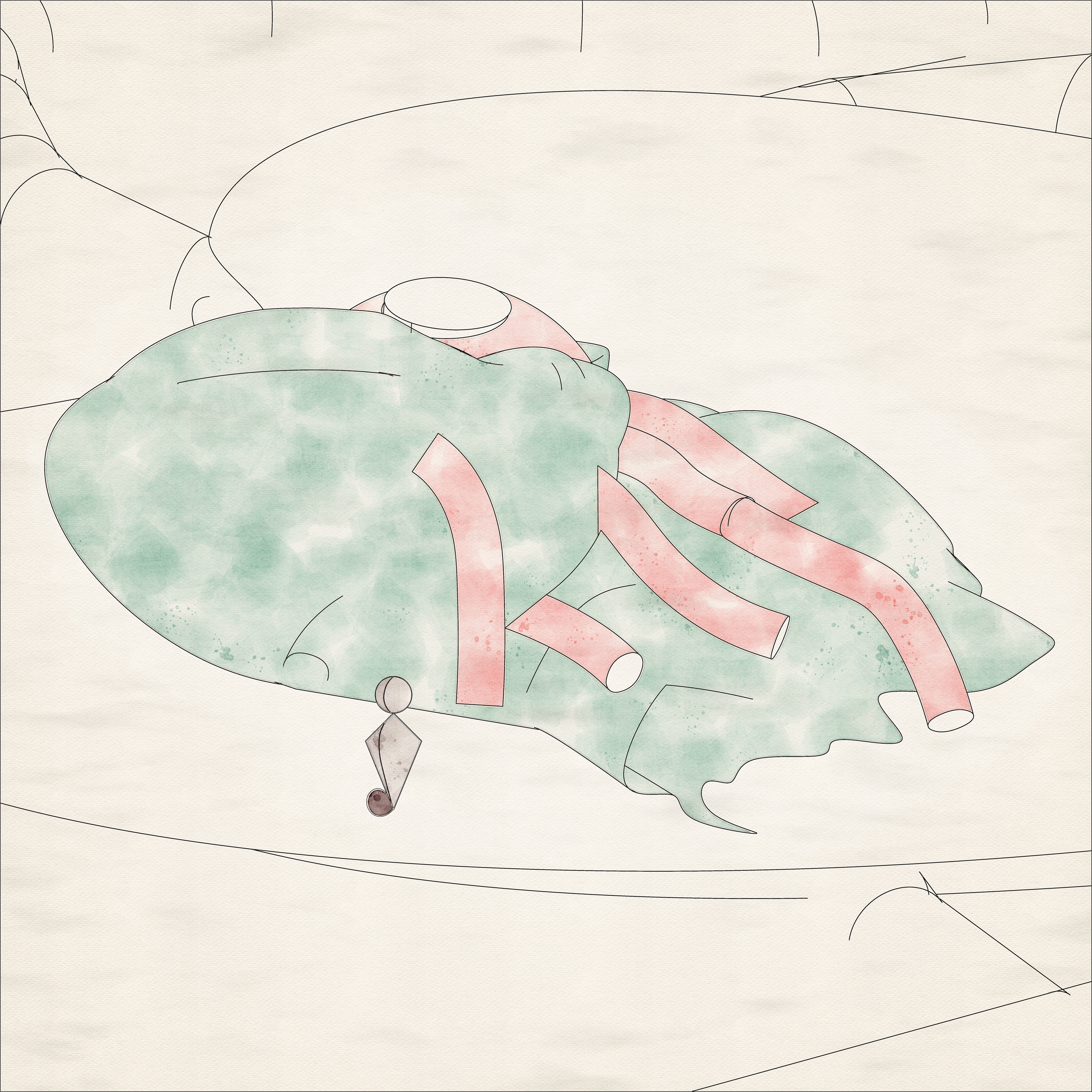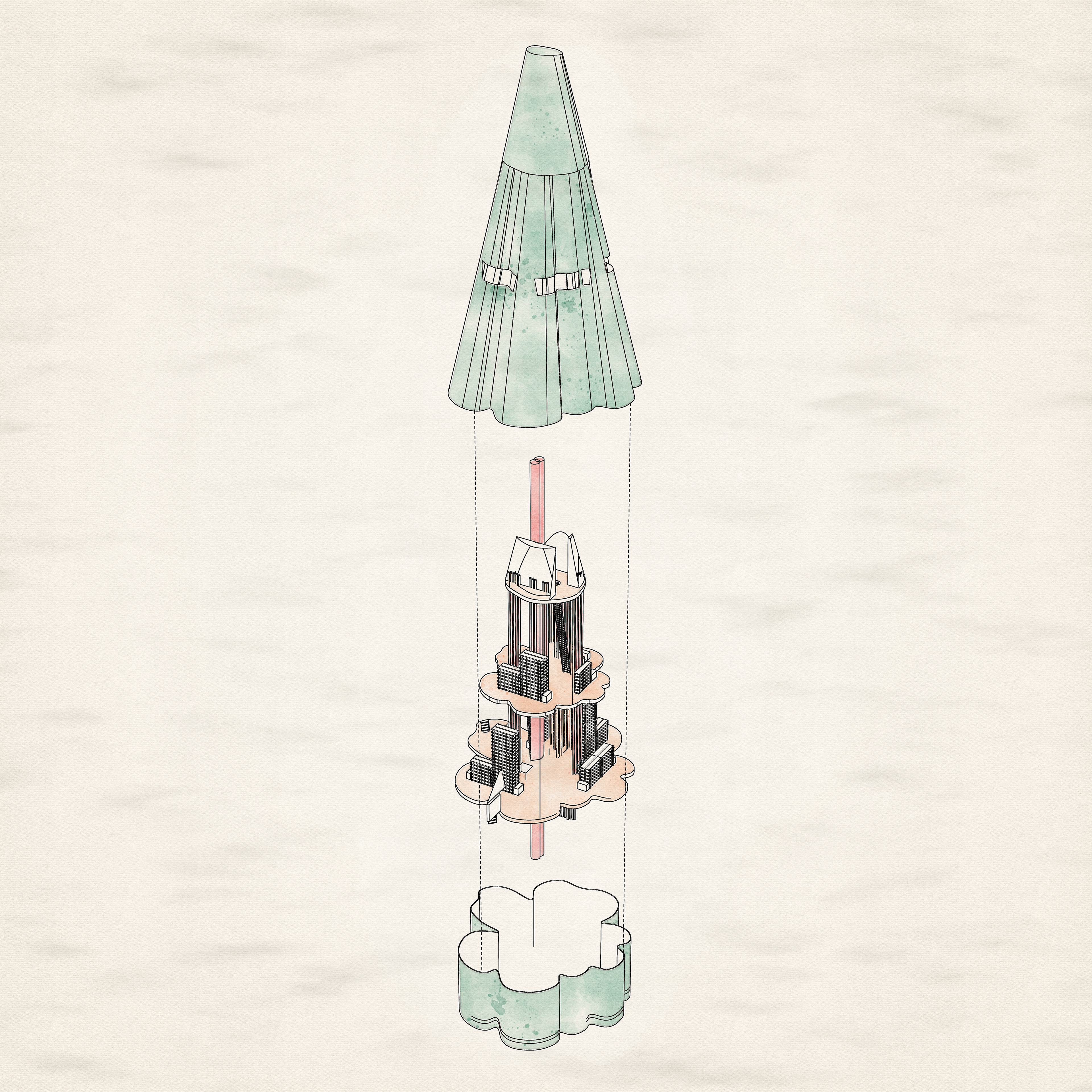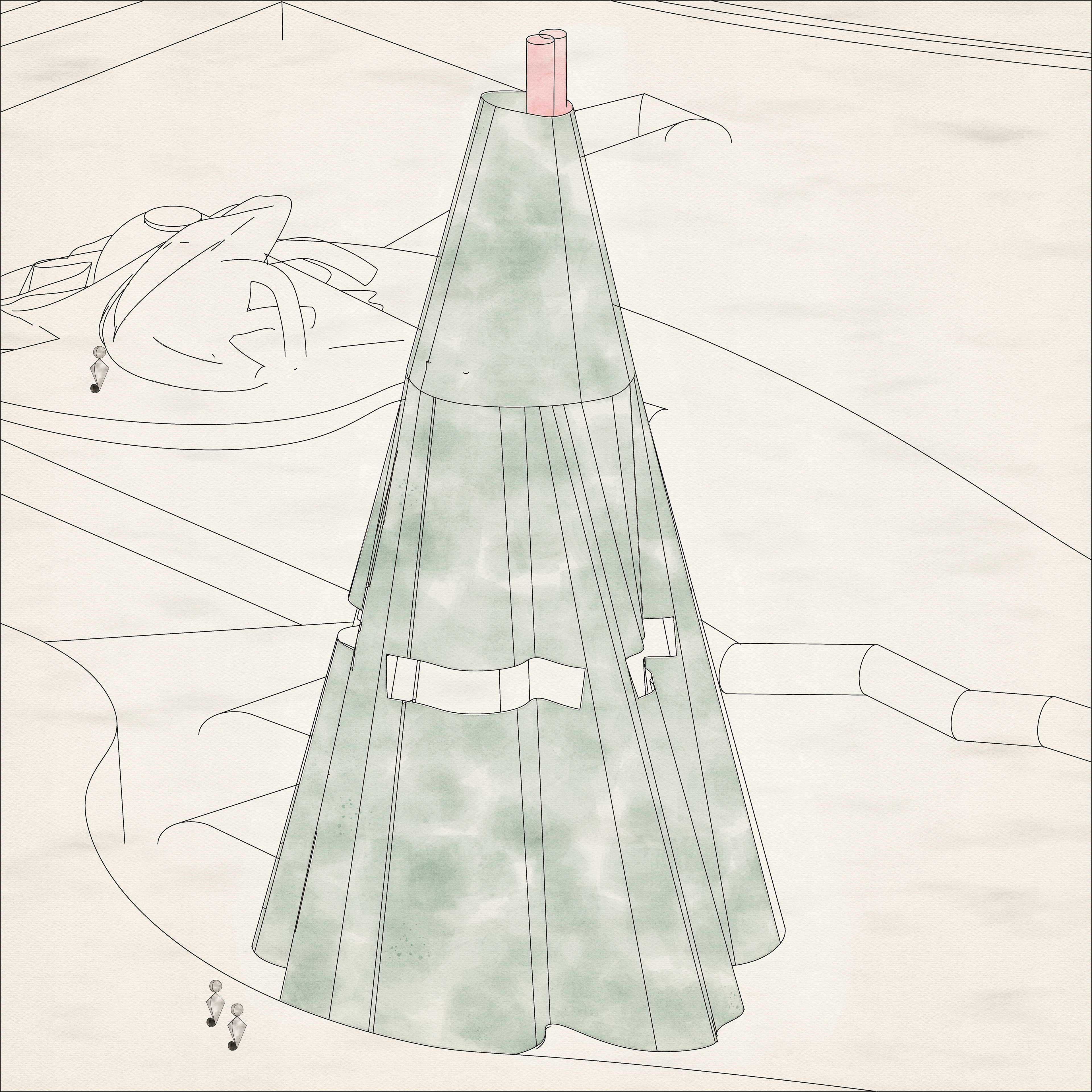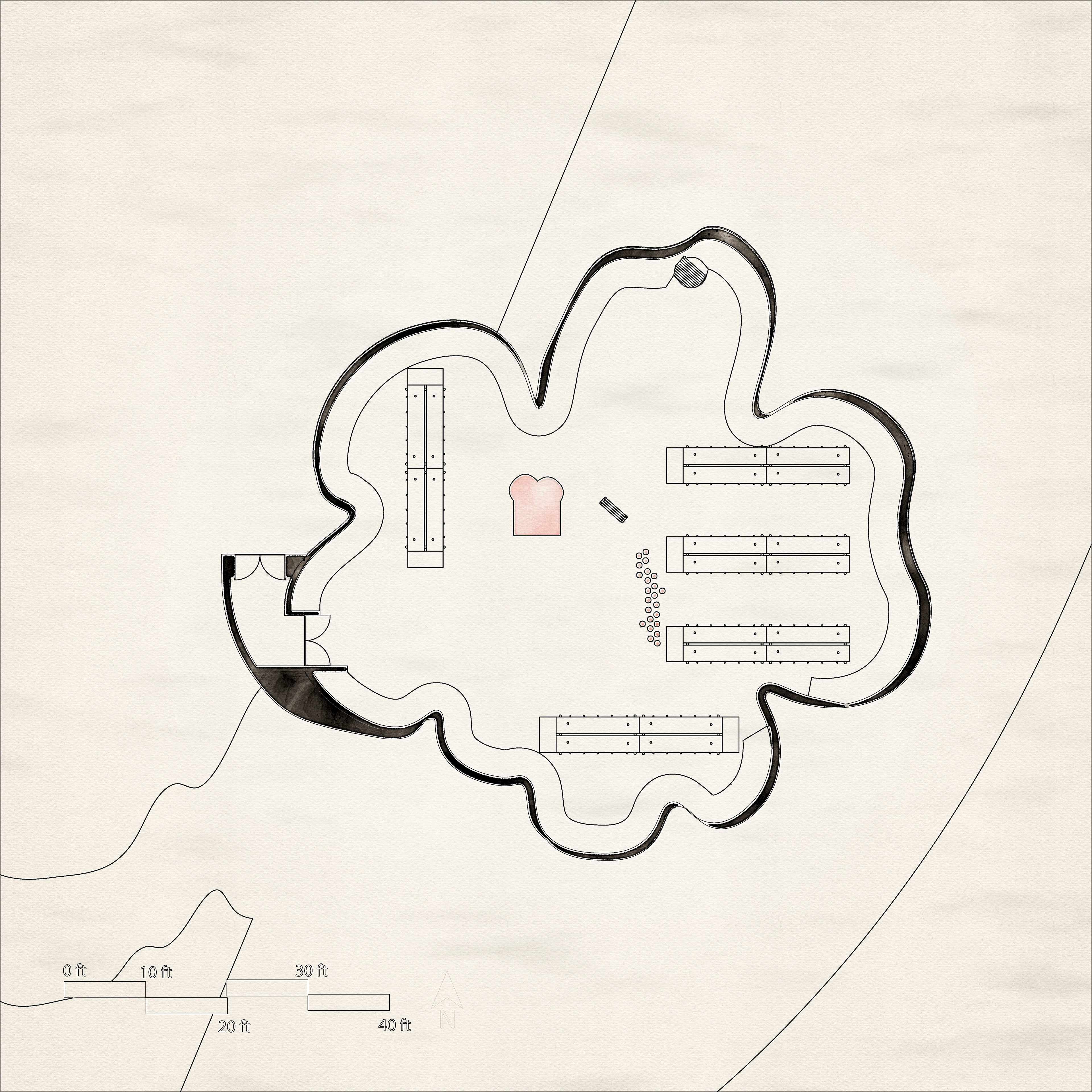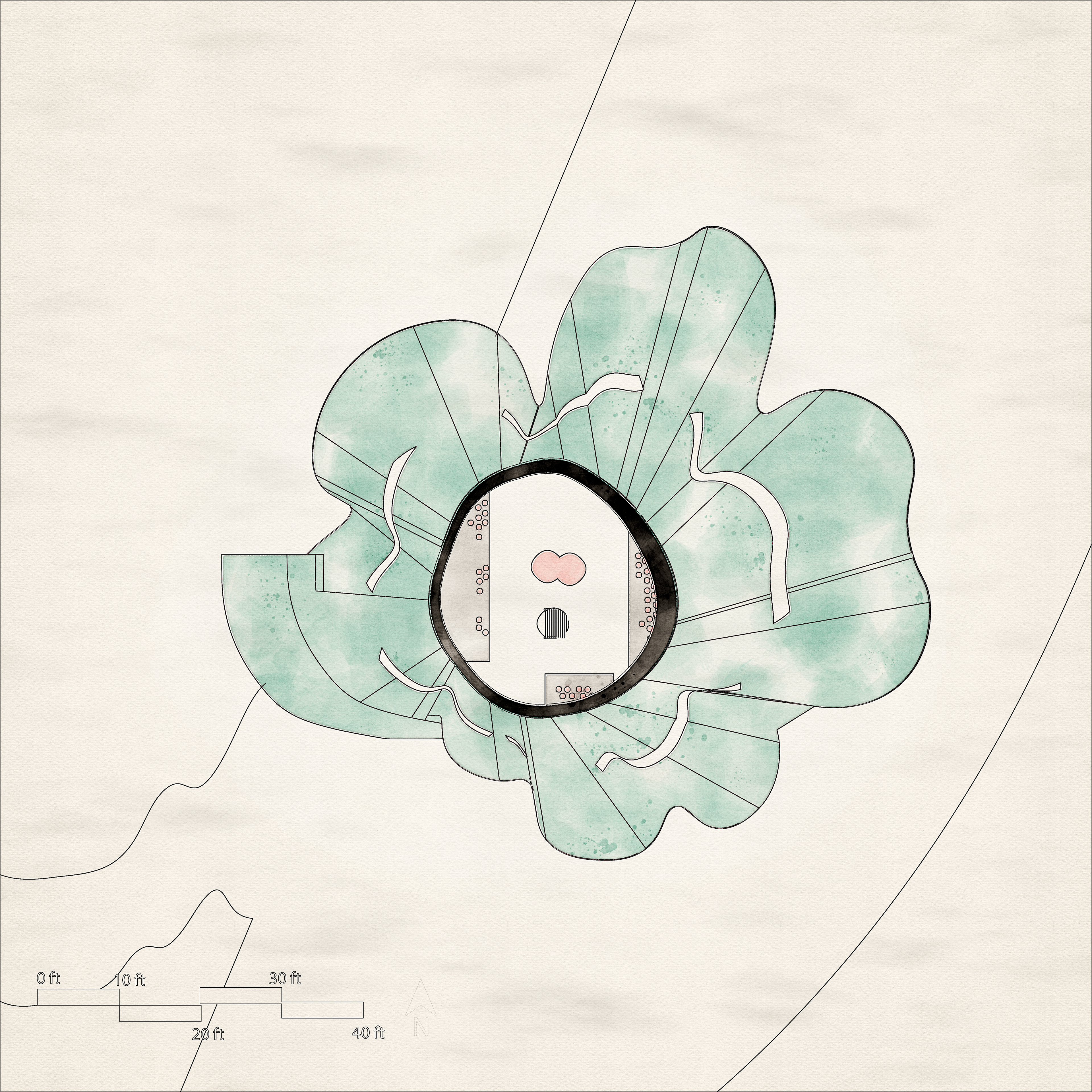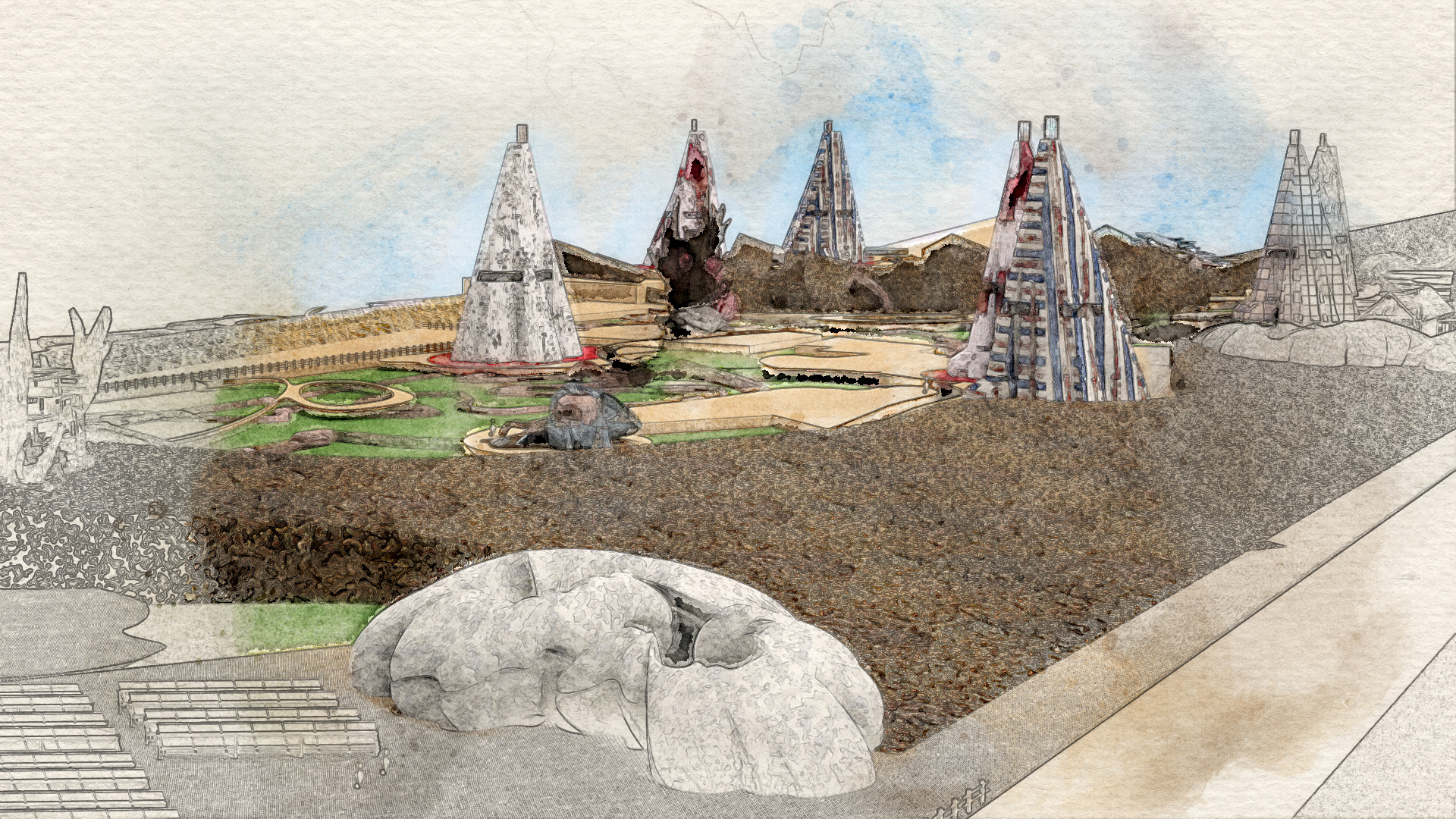True Grit represents my interpretation of the American farm. The farm is a hyperobject comprised of social, legal, and infrastructural objects that maintain their own independence. The farm is a hyperobject void of typology.
To begin the project, I started analyzing the pastoral American represented in paintings and photography. I then moved to examine African American’s and their history with the land. What did it mean to develop a black farm socially? Moving from this I began gathering information pertaining to the legal aspect of the farm. What laws and regulations oversaw the farm and land? Lastly, I addressed the aspect of infrastructure within the farm. What programs were necessary to operate my farm?
To begin the project, I started analyzing the pastoral American represented in paintings and photography. I then moved to examine African American’s and their history with the land. What did it mean to develop a black farm socially? Moving from this I began gathering information pertaining to the legal aspect of the farm. What laws and regulations oversaw the farm and land? Lastly, I addressed the aspect of infrastructure within the farm. What programs were necessary to operate my farm?
To develop my landscape and objects, I mapped my site and the surrounding city. In the vein of Triple O, the maps I collected were regarded as objects that contained the identity of the surrounding environment. Taking the maps, I generated a composition which evolved into the hyperobjects (buildings and landscape) present on my farm.
The pastoral idea of America argues that the nature people envision is untouched, untamed, and full of uncertainty. The reality of the landscape is the seen and unseen. In my project you will see pipes crossing the landscape. These pipes represent the unseen or unsightly but important part of the farm. Contrary to a landscape painting, the architecture on the farm does not maintain beauty. Instead the architecture is a part of the whole.
I turned to the Beaux Arts style to understand the landscape. Jean – Jacques Lequeu, a French architect and draftsman piqued my interest. Lequeu depicted the landscape not as factual, but instead, focused on objects and architectural elements inserted in the landscape. Not having access to photography, many Beaux Arts painters utilized watercolors to represent nature and architecture.
Jacques Lequeu’s watercolors present familiar figures in an unfamiliar way. The observer can instantly recognize the familiarity of an elephant, but is unfamiliar with architecture inside an elephant. To develop my argument and figures, I sought to push and tweak
reality.
When developing my renders and drawings, I chose to emulate a watercolor representation. In part this was to reference Jean-Jacques Lequeu and other Beaux Art’s artists. The representation of water colors also lends itself to an earthy and dirty representation. The farm is not a pristine landscape, so its representation should not be either.
When searching for photography, I felt it was pertinent to discover photo’s depicting African Americans working the land. African Americans have a long and muddled history with the land. Slaves were forced to work the land under their white owners. Reconstruction saw the freedom of the slaves, but then the subsequent rise of tenet farmers. These tenet contracts allowed little mobility for former slaves, restricted the ability to own land, and forced many into debt. African American farmers slowly achieved prosperity until the civil rights movement. During this time push back from banks and segregation practices saw many black farmers lose their land or leave farming. The rise of African American cooperatives which worked to obtain loans and move product for black farmers was essential to overcoming these challenges . As recent as the 2010s the FDA was found to be practicing discriminatory practices and refusing to allocate funding and loans to African American farmers.
Today only about two percent (2%) of farms are black owned. Countless hardships combined with the stigmas placed on black farmers has reduced black farm ownership. Some African Americans associate farming with slavery and are against the idea of working the land. Though the land was the scene of the crime, the land is not at fault.
The black farm has always been centered on the idea of community. This community has banned together to purchase land, to move crops, to share in celebration, and to fight for their rights. I knew to do justice to these ghosts, I could not claim that this farm I designed was for a black farming family. Instead it is for the community of African American farmers. This is the social object of my farm.
The last area I heavily studied before moving into my mapping exercise was to analyze the operations or Agrilogistics. Specifically the laws that govern the land.
Here in Texas it is very important to understand the laws regarding the usage of property. In Texas there are numerous land rights but I will mainly focus on mineral, water, wind, timber, surface, airspace, and development rights. Mineral rights are by far the most contested rights in Texas due to oil.
Owners of mineral rights can utilize a necessary amount of land they do not own to capture their resource. Water rights are the second most contentious rights in Texas. In farming it is important to have water rights. Should a farmer not own the water rights, they must buy water. Wind rights are very popular in West Texas. Should someone wish to capture the wind (such as a windmill) they must own the wind rights. If the number of windmills was specified during the selling of the land or severance of the right, the owner of the wind right can utilize land they do not own to capture the resource.
Surface rights are typically what is bought when buying land. The surface right is just the topsoil or the first 6” of the land. Airspace rights is the ability to build and utilize the space above the surface to a designated height. In many instances this right is preserved to stop the building of windmills. Lastly development rights restrict the development of land. This right is considered a deed restriction. In most instances when severing the development right the owner will donate it to a nonprofit organization and will claim a donation value on their taxes.
When slavery ended many farmers lost their source of labor. African Americans had been promised land and tensions began to rise. The government did not provide the 40 acres to these former slaves and instead negotiated tenet contracts with them. As tenets they worked land they did not own to produce crops and livestock hoping for a better life. For most African American tenet farmers, this arrangement did not lead to a better life. Instead they were subject to immense debt and struggled to make gains.
Today a very similar practice still takes place. No longer aimed at former slaves, instead it takes advantage of aspiring farmers. Starting a farm requires significant capital income that requires potential farmers to take out significant loans and be awarded grants. Some corporations have seen this as the perfect opportunity to strike. These corporation offer the farmer the chance to start a business or grow. Often the corporation finances the land, supplies livestock, and secures logistics for the farmer. The farm in returns pays a significant amount of interest and fees. Typically the farmer gets trapped in an endless loop of interest payments and required capital improvements. This is the legal object of the farm I must navigate.
Taking everything that I had learned about a farm, I needed to identify the infrastructure object of the farm, and what was necessary to operation. The first step was to identify what I interpreted as the farm program. I identified five building types necessary to the idea of a self-sustaining farm. A vertical garden with food storage. (To diversify crop production, reduce land use, and lessen environmental impact.) A machine hive that controls the irrigation system and pulls water from wells beneath the ground. A research center to explore the growth of new crops in vertical farming, conduct soil and water test, and develop sustainable practices. A farm house with sleeping arraignments for up to 8 individuals (the famers and farm hands). The rodeo to provide a community space and spectacle. The rodeo represented that branding element of the farm.
These five programs were identified as being integral to the farm infrastructure. Having concluded my research, I began a mapping exercise. I started by selecting my site and the town I would be adjacent too. Floresville Texas was selected due to the abundance of adjacent farm land, the low population of a rural town, the slow growth (it just got a Walmart) and its position south of San Antonio (part of the San Antonio Statistical Area).
I began collecting GIS Data published by the city and generated maps. This information allowed me to analysis the topography of the area, the city border, planned annexation, major roads, planned development and zoning.
The ArcGis maps were interesting, but I wanted to find maps that maintained the fabric of the community. To accomplish this, I turned to the historic maps of Floresville and Wilson county. Combining these maps with the maps generated from ArcGis and satellite imagery, I was able to form my own consensus about Floresville.
Taking all my maps and paintings I began developing a composition. Overlaying lines and figures to create a piece of art. From the piece of art, I moved to generating a landscape of objects. These objects maintained the identity of the maps while establishing their independence. Objects that dot the landscape.
Once my research was completed and my objects formed, I began to position my farm. I set about combing the social, legal, and infrastructural objects with my objects formed from the fabric of nature. Ideally these four objects would comprise the hyperobject that is my farm. But then suddenly everything came to a head. I began contemplating intention versus necessity.
What was the purpose of intention in my farm? How do the people, the stories, and the objects come together as the hyperobject of the farm. The ecological objects were formed with the intention of being independent objects formed from nature. Was it not heretical to demand these objects become containers for necessity? Necessity dictated that I must have a social, legal, and infrastructural object housed on my farm to meet the needs identified.
I wrestled with these thoughts until I realized I was examining the problem incorrectly. Going back to the premise of Triple O, I needed to regard each object as being independent from one another. These objects were not formulated with the idea of them being joined. Instead they must maintain their independence. This thinking leads me to a dichotomy, intention vs necessity. Architecture must gain agency, for it can not be a receptacle for program.
Silo: When examining my silo, intention is a flower reaching skyward. Necessity demands that I convert this into my silo for food storage and vertical farming.
Research Center: The research center is housed in an object resembling a heart. The heart object was formed from a map of Wilson county situated at the heart of the landscape. The research center epitomizes the infrastructural object. The vertical farming and machine hive become dependent on its function.
Machine Hive: My machine hive is born from the idea of a stamen waiting to be pollinized. A need for irrigation, drone storage, and a well pump requires it to transition into an infrastructural and legal artery.
Farm House: The farm house is the strangest object within my landscape. The human object dictated by necessity takes the foreground. The imagery of the farm house is not subtle and one instantly understand what this object is. The objects born from intention take a distinct role overhead of the human object. A cloud above and nature consuming the roof. In this was the farm house becomes the underworld buried beneath the soil, plants, and sky above.
Rodeo: The rodeo is the strongest social object. The rodeo is a place for famers, competitors, and the community to come together. The rodeo is integral to the idea of developing a social farm. Black rodeo’s such as Bill Pickett Invitational Rodeo are integral to the culture associated with African American farms. The object the rodeo inhabits was birthed from flower petals opening.
Instead of rectifying the idea of intention vs. necessity, I will instead let them coexist, each as a hyperobject of the farm, coming together to form the larger hyperobject of the farm.
